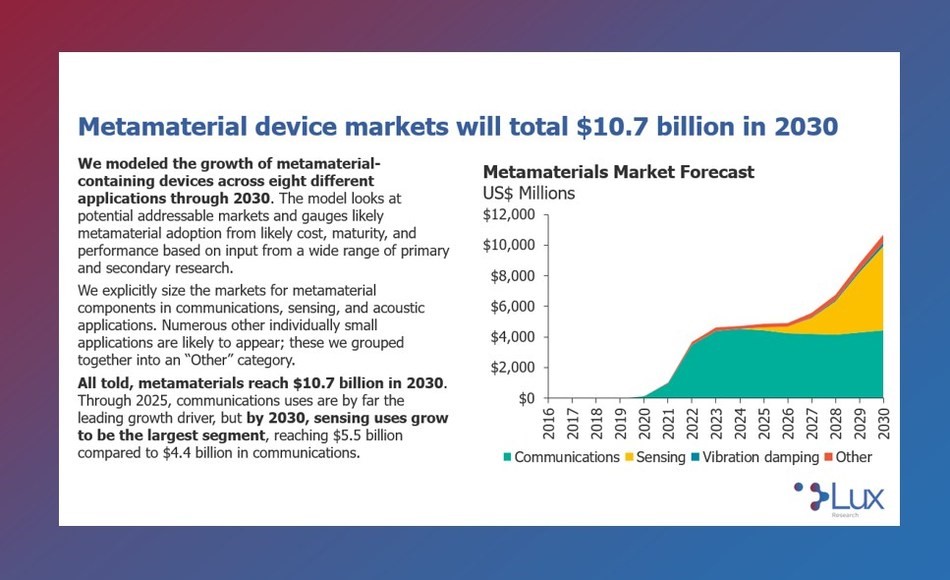Metamaterials, or composite synthetic materials possessing properties not seen in natural materials, are poised to take over the world. At least, that’s what a recent analysis from Lux Research seems to indicate.
The metamaterial device market, which includes 5G networks, autonomous vehicles, connected vehicles, sensors, acoustic materials, and more, is poised to grow to $10.7 billion by 2030.
The Lux Research report reveals how metamaterial designs enable devices with much greater performance and efficiency than conventional offerings. Metamaterials are being deployed for telecommunication antennas, electromagnetic sensors like radar and lidar, vibration damping, energy harvesting, and wireless charging. Critically, these metamaterial devices all use combinations of standard, existing materials. Moreover, advances in manufacturing technologies, from 3D printing to lithography, now enable startups to cost-effectively manufacture these devices at scale.
Metamaterial devices offer smaller size, greater energy efficiency, and more precise directionality and control. In many cases, metamaterial devices are not much more expensive to produce than conventional devices. As a result, once metamaterial options reach the market, conventional offerings are likely to become uncompetitive.
Key early metamaterial antenna patents are set to expire in the 2024 to 2028 timeframe. At that point, analysts expect to see a rapid increase in the number of companies developing metamaterials, much like the explosion of activity 3D printing experienced after early patents expired between 2005 and 2008. Metamaterial adoption should occur at the speed of software, not the slower place of typical new material innovations, analysts say.
Metamaterial Adoption Will Lead to Rapid Growth in Disruptive Technology Markets
“Metamaterials enable electromagnetic and acoustic performance characteristics that no conventional design can match, and are finally becoming practical to manufacture and use,” said Anthony Vicari, analyst at Lux Research and lead author of the report. “These performance advantages are especially valuable in communications antennas, as well as sensors such as radar and lidar. With the imminent rollout in 5G network infrastructure and devices, and the subsequent projected growth in connected and autonomous vehicles, metamaterials are becoming viable at just the right time to see rapid growth in these new markets.”
For more information about the metamaterials market landscape, download the executive summary.


